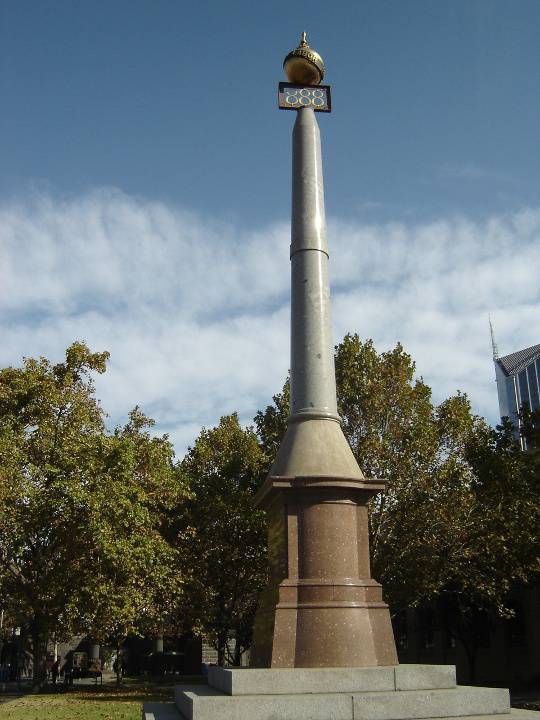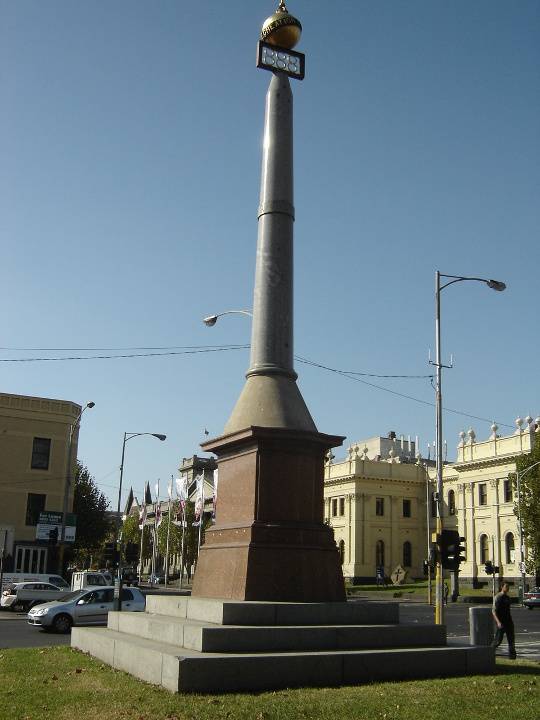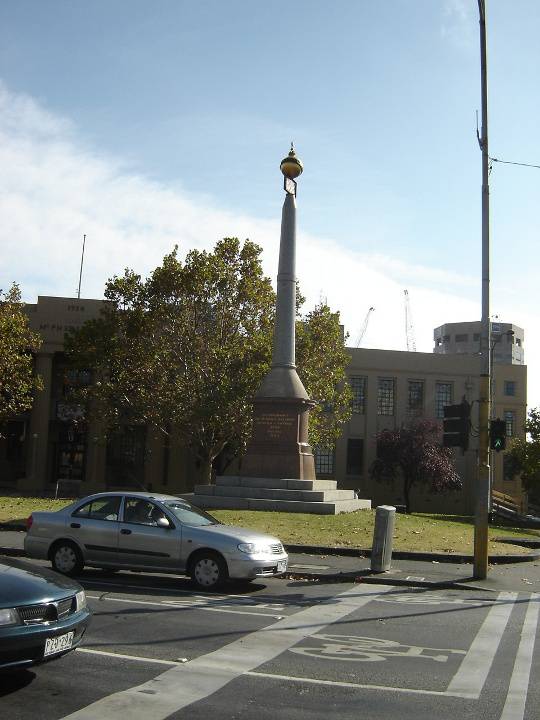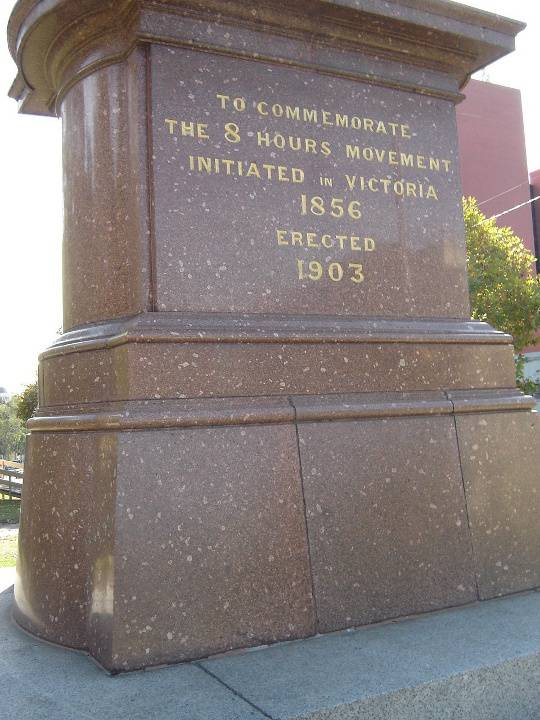| Back to search results » | Back to search page » |
|
EIGHT HOUR MONUMENT
Other Name8 HOURS MONUMENT LocationRUSSELL STREET MELBOURNE, MELBOURNE CITY
File Numberpl-he/03/0388LevelRegistered |
|
Statement of Significance
What is significant? The Eight Hour Movement Monument has been located at the corner of Russell & Victoria Streets in Melbourne since 1923. The Eight Hour Movement started in Melbourne in early 1856 to improve workers conditions. On April 21 1856 stone masons working at the University site downed tools and marched on Parliament House, which was also being built at this time. A large number of other important public buildings in Melbourne were also being built and this had increased the demand for skilled workers in the building trade, leaving these workers in a strong position to negotiate better wages and conditions. The stone masons were seeking eight hours labour, eight hours rest, eight hours recreation. The building trades in Melbourne were some of the first workers in the world to achieve these conditions. The right to an eight hour day did not immediately apply to all workers, but the movement provided the impetus for other trade unions to agitate for similar conditions. After this victory the movement had an annual celebration in April with a street procession and, later, a public holiday. The procession was held on or close to the April 21 date as possible. The Eight Hours Day was to become the symbolic festival of colonial labour. The public holiday for the 'eight hour day' or Labour Day as it came to be known in the twentieth century was granted in 1879. The Eight Hour day procession and holiday was changed to March so as not to compete with the Anzac Day march and holiday after the first World War. The procession itself was very popular with huge crowds in the late nineteenth and early twentieth century, but attendance became sparser in the twentieth century and the procession was abandoned altogether in 1952. The Moomba Festival took over the Labour day holiday in the mid 1950s and various attempts have been made to re-capture the original meaning of the Labour day holiday. In the late 1880s a National Monument Sub committee of Trades Hall was formed to organise and raise subscriptions for a monument. The site was chosen in 1890 in the Carpentaria Reserve (now the Gordon Reserve VHR 47) in Spring Street adjacent to the Parliament Buildings. The Monument was to commemorate the pioneers of the Eight hour movement and act as a focal point for the annual procession. The original design for the monument was by the prominent sculptor Percival Ball, and depicted allegorical life size figures. The 1890s economic depression was, however, not the best time to be seeking contributions and the project lapsed. Instead early in the twentieth century Ball created a simpler (and cheaper) design. This monument is made of Harcourt granite column topped with the figures 888 and a globe encircled by the words 'Rest, Labour & Recreation'. The monument was unveiled by surviving pioneers of the 8 Hour movement with ribbons and speeches on 21 April 1903. The eight hour procession was re-routed to finish at the new monument. In the early 1923 the Monument was moved from Carpentaria Place, although the motives for its removal remain unclear, the City of Melbourne went to considerable expense to move the monument to its present site at the corner of Russell and Victoria Streets opposite the Trades Hall. There is a suggestion that the move occurred so that the eight hour procession could be changed and the Monument became the beginning of the procession rather than the end. The monument was unveiled in January 1923 at its current site. How is it significant? The Eight Hour Monument is of historical and social significance to the state of Victoria. Why is it significant? The Eight Hour Monument is of historical significance to the State of Victoria for its association with the Eight Hours day movement. The granting of the Eight Hour day saw the development of organised labour in Australia, and the granting of wages and conditions that lead to Australia being seen as the 'working mans paradise' in the late 19th century. The Eight Hour Monument is of historical significance as a part of the commemorative process of colonial history, the desire to commemorate the Eight hour movement was a part of the process of creating a uniquely Australian identity and the monument itself is an important artefact of the making of Australian history. The Eight Hour Monument is of social significance for many people as a symbol of labour activism and a place where the Eight hour movement continues to be remembered and celebrated. The Eight Hour Monument is of aesthetic significance as a simple and elegant monument by the prominent sculptor Percival Ball in1903.
Group
Public Art
Category
Monument









